Throughout 2023, the VAEEC worked with our members to advance energy efficiency policies and programs in Virginia. Check out the graphic below to see our top 10 accomplishments. 2023 began the first year of our new, three-year strategic plan, which builds off of the tremendous progress we’ve made over the last several years. We are excited to begin the next chapter on solid ground with endless opportunities.
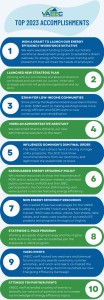
The Commonwealth’s energy efficiency community gathered on October 4th and 5th for the VAEEC’s annual Energy Efficiency Forum. Thank you to our sponsors, speakers, award winners, and attendees for making this event a great success!
Day one was fully virtual in an effort to make the event more accessible and to provide a diverse array of speakers from across the country. It consisted of a keynote address and four breakout sessions:
Keynote Address: Dr. Bob Holsworth is a Managing Partner at DecideSmart, a consulting firm that provides strategic solutions for complex challenges. Bringing decades of experience in the political sphere, he provided an analysis of Virginia’s election landscape and what that can mean for the Commonwealth’s clean energy future.
“Regardless of the election results, there will be a slate of new legislators. Education will be important.” – Dr. Bob Holsworth, DecideSmart
Technology: What’s New and What’s Next?: The panelists in this session discussed heat pumps and heat pump hot water heaters, demand response AI programs, and data center cooling technologies. The discussion helped to sift facts from fiction and suss out what the on-the-ground realities are, and what we can look forward to in the future. Speakers included Richard Anderson (Siemens), Millie Knowlton (CPower), Andrew Grigsby (Viridiant), and Adam Sledd (Dominion Energy Innovation Center, moderator).
“The question we try to answer is, how can we leverage technology to help humans?” – Richard Anderson, Siemens
Implementing Green Building Policies in a Dillon Rule State: As a Dillon Rule state, Virginia localities are limited as to what they can and cannot mandate. However, jurisdictions are finding creative ways to make progress happen in their communities. Join speakers from Arlington County and the City of Alexandria as they discuss their green building policies and programs, and how they have established minimum standards for new development and major renovations. This was an interactive session where audience members were encouraged to engage with speakers to learn how to implement their own green building policies. VAEEC Board member, Bill Eger (Arlington County), moderated the panel, which included Arlington County’s Paul Roman and the City of Alexandria’s Valerie Amor, and Robert Kerns.
“The idea of ‘business as usual’, ‘we’ve always done it this way’, is one of the biggest challenges in getting developers on board. We’ve got to embrace new ways of doing things to implement green building strategies.” – Valerie Amor, City of Alexandria
Rural Energy Efficiency: No Town Left Behind: According to the Department of Housing and Urban Development, 88% of Virginia is considered rural. However, this population is often overlooked in energy efficiency policy and programs. This panel focused on how to reach rural communities and what opportunities are available to them. Speakers included Adia Holland (U.S. Department of Agriculture), Lance Hostutler (Optimum Building Solutions LLC), Will Payne (Energy Delta SWVA), and VAEEC Board Vice Chair, Leigh Anne Ratliff (Trane Technologies, moderator).
Case Study Session: Green Building Certifications: Green buildings are environmentally responsible, resource-efficient, and create healthier, more comfortable spaces. Numerous certification systems exist to assess a building’s sustainability and designate it as a green building. This case study session was designed for attendees to benefit from shared knowledge and experience through presentations and audience Q&A. The certifications featured included EarthCraft, Zero-Energy Ready, and Pearl Certification for single-family homes, multifamily buildings, and whole communities. The session was moderated by VAEEC Board member, Bryna Dunn (Moseley Architects), and speakers consisted of Stephen Dareing (Viridiant), Jay Epstein (Healthy Communities), and Casey Murphy (Pearl Certification).
“I want to make low-performing homes the green avocado refrigerators of 2023.” – Casey Murphy, Pearl Certification
After the virtual day wrapped up, attendees had the opportunity to join one of two regional happy hours to further connect with other energy efficiency professionals. This was the first time we have offered a regional happy hour in conjunction with a virtual event. What a great way to spend 2023 #EnergyEfficiencyDay!
Attendees gathered in person for day two at the University of Richmond Jepson Alumni Center in Richmond. The day began with an opening presentation from Executive Director, Chelsea Harnish. Attendees were provided with updates on the organization’s 2023 accomplishments and our 2024 priorities, as well as an overview of the Commonwealth’s energy efficiency industry. The day also included a keynote address, a plenary panel, the eighth annual Virginia Energy Efficiency Leadership Awards ceremony, and an on-site reception.
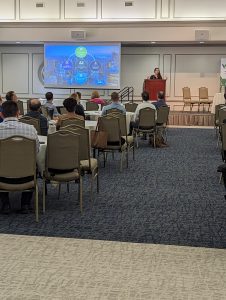 Keynote Address: Attendees were then treated to a keynote address from Dr. Karma Sawyer, Director of Electricity Infrastructure & Buildings (EI&B) Division at the Pacific Northwest National Laboratories (PNNL). In this role, Dr. Sawyer is responsible for shaping and managing a vision and strategy to ensure that PNNL addresses the U.S. Department of Energy’s most important energy efficiency, clean energy, and electricity infrastructure challenges. She discussed energy efficiency as it relates to cutting-edge research, building codes, market transformation, federal funding, and emerging technologies, with a specific focus on equity.
Keynote Address: Attendees were then treated to a keynote address from Dr. Karma Sawyer, Director of Electricity Infrastructure & Buildings (EI&B) Division at the Pacific Northwest National Laboratories (PNNL). In this role, Dr. Sawyer is responsible for shaping and managing a vision and strategy to ensure that PNNL addresses the U.S. Department of Energy’s most important energy efficiency, clean energy, and electricity infrastructure challenges. She discussed energy efficiency as it relates to cutting-edge research, building codes, market transformation, federal funding, and emerging technologies, with a specific focus on equity.
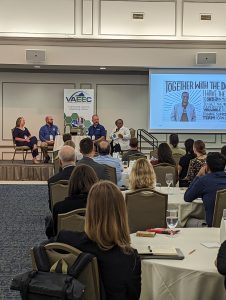 The Energy Efficiency Workforce Initiative: A Holistic Path to Workforce Development: After a break for networking and snacks, attendees came back together for the plenary session focused on the VAEEC’s Energy Efficiency Workforce Initiative. For the last two years, the VAEEC has been developing the EEWI to address Virginia’s growing workforce needs. This panel provided updates from staff and our expert partners as we build out each piece of the puzzle – recruitment, training, placement, and sustainable retention. Speakers included Laura Hanson (Tidewater Community College), Phil Hull (CHP Energy Solutions), Michael Flanagan (Quick AC Quote), Crystal McDonald (D.C. Sustainable Energy Utility), and Rebecca Hui (Virginia Energy Efficiency Council, moderator).
The Energy Efficiency Workforce Initiative: A Holistic Path to Workforce Development: After a break for networking and snacks, attendees came back together for the plenary session focused on the VAEEC’s Energy Efficiency Workforce Initiative. For the last two years, the VAEEC has been developing the EEWI to address Virginia’s growing workforce needs. This panel provided updates from staff and our expert partners as we build out each piece of the puzzle – recruitment, training, placement, and sustainable retention. Speakers included Laura Hanson (Tidewater Community College), Phil Hull (CHP Energy Solutions), Michael Flanagan (Quick AC Quote), Crystal McDonald (D.C. Sustainable Energy Utility), and Rebecca Hui (Virginia Energy Efficiency Council, moderator).
Energizing Efficiency Campaign & Virginia Energy Efficiency Leadership Awards Ceremony: Next, we had the honor of hosting our eighth annual Virginia Energy Efficiency Leadership Awards ceremony. We started off by highlighting the 18 submissions to our inaugural Energizing Efficiency Campaign. Case studies can be viewed for each of these participating projects or programs on our 2023 Energizing Efficiency Campaign page. From these 18 submissions, five were chosen by the VAEEC’s Education & Events Committee to receive a 2023 Virginia Energy Efficiency Leadership Award for their incredible energy efficiency contributions. For information on each winning project or program, visit our 2023 Awards page.
The event concluded with an on-site networking reception sponsored by Dominion Energy. It is always a pleasure to connect with many of our members and others in the industry face-to-face, and this was no exception.
Thank you to our sponsors, speakers, award winners, and event attendees for making this one of our best events to date. Click here to view photos of the event. Additional event information, including speaker biographies and sponsor features, can be found in the event program.
Event attendees will receive recordings for each of the four breakout sessions in the post-event email. Presentation PDFs can be viewed at the links above.
Last December, Dominion filed an application with the State Corporation Commission (SCC) for its proposed Phase XI DSM programs. This filing included three new energy efficiency programs, four new EE program “bundles,” one demand response program, and one EV telematics pilot program. The company requested a $149M budget cap with a 15% variance. In addition to the new programs, Dominion asked to permanently close its appliance recycling program and expand its agricultural program to residential customers who run small, family farms. The Company requested to close an additional seven other programs whose measures were being rolled into the proposed program bundles.
Our Executive Director, Chelsea Harnish, filed testimony on behalf of the Virginia Energy Efficiency Council (VAEEC) in support of the Phase XI programs with a few concerns and suggestions for improvement.
Here is a summary of other highlights from our testimony:
- Leveraging functionalities of AMI to enhance the effectiveness of DSM programs
- Expanding program offerings to dual-fuel customers (those with gas heat and electric AC)
- Quantifying whether funding from the Inflation Reduction Act could lower program costs
- Including Non-Energy Benefits (e.g., Social Cost of Carbon) in cost/benefit test scores
- Requiring BPI certification for the Residential Home Retrofit Program Bundle
On May 17, 2023, the case was heard before the Hearing Examiner assigned to oversee the case. The Examiner was very supportive of the stakeholder process and stated several times that parties were “on notice” to vet new program ideas and areas of concern through the stakeholder process. This is the first time that a Hearing Examiner has put such an emphasis on the value of the stakeholder process. We hope the Commission’s Final Order reflects this same sentiment.
Meeting the Goals of the Virginia Clean Economy Act
As part of the application, company witnesses shared the progress towards meeting the Energy Efficiency Resource Standard (EERS) goals of the Virginia Clean Economy Act (VCEA). According to Dominion, the Commission has not made it clear whether they should calculate Gross savings (all savings achieved in a given year) or Net savings (all savings achieved in a given year minus free riders), so they provided calculated savings for both. As seen in the table below, provided by company witness Nate Frost, the company has met the 2022 goal either way but is only able to achieve the 2023 goal with gross savings calculations. For the 2024 and 2025 goals, the company is projected to not meet either goal under either scenario.
| Year |
VCEA Target % |
MWh savings |
Projected/ Actual Gross Savings |
Projected/ Actual Net Savings |
| 2022 |
1.25% |
852,892 MWh |
1.9% |
1.4% |
| 2023 |
2.5% |
1,705,783 MWh |
2.6% |
2.1% |
| 2024 |
3.75% |
2,558,675 MWh |
3.1% |
2.4% |
| 2025 |
5% |
3,411,567 MWh |
3.6% |
2.9% |
In pre-filed testimony, SCC staff witness Andrew Boehnlein noted that Dominion will have a projected shortfall of 1180 GWh in meeting the 2025 energy-savings goal. Mr. Boehnlein also calculated that the proposed Phase XI programs would only cover 5% of the shortfall in 2024 and 7% in 2025. Given that there are no further opportunities for new programs in 2024, the company must prioritize implementing recommendations from its long-term plan filed as part of last year’s filing (Phase X) to bridge the gap in 2024.
Company witnesses identified several market barriers they believe are impeding the company’s success in meeting its goals. These challenges include declining potential and updated building codes. The VAEEC questioned the extent to which these were barriers during the proceeding. For instance, current building codes should only be used as the baseline for determining the savings potential for new construction programs since it is unlikely that homes constructed prior to the last 3-5 years would meet more stringent energy codes. In interrogatories, company witnesses confirmed they only use current building codes for new construction programs. Since the company only has one residential new construction program, current energy-efficient building codes are unlikely to severely affect the company’s ability to meet its EERS goals.
All utilities experience declining potential, the continual reduction of savings opportunities out in the market, especially for lighting products as federal regulations have required more efficient product manufacturing. However, declining potential is not the same for every utility. Utilities that have been implementing programs over several decades find that declining potential can severely affect new program opportunities. However, for Dominion, who only began offering energy efficiency programs in 2009, and has low participation numbers in most of their programs, there is still a lot of potential energy savings to be captured.
As mentioned, Dominion’s participation numbers are low. SCC staff witness Mr. Boehnlein summarized data from the Company’s 2022 EM&V report. In 2021, the average residential program achieved approximately 45% of expected participation and 57% of estimated energy savings. For the non-residential programs, the average was 43% of expected participation and 32% of estimated 2021 savings. Staff surmised that based on previous program performance, the Company’s projected participation rates for the proposed Phase XI programs are higher than any program that has been implemented to date. In other words, the proposed programs will cover less than 5% of the estimated shortfall in 2024 and 7% in 2025.
Mr. Boehnlein also noted that the 2022 EM&V report stated portfolio bill savings for customers were approximately $26.6M while program costs were more than double at about $59.8M with 43% of those costs being administrative in nature.
Hearing Examiner’s Report and Recommendations
On June 16, 2023, the Examiner issued his recommendations to the Commission, which included approval of all programs, with the $149M budget cap and 15% variance, with no program expiration date. While the budget variance request and not having a predetermined closure date are standard in other states, in Virginia, these requests were typically denied by the SCC up until last year.
The Hearing Examiner was thorough in his review of the case and analyzed all of the remaining issues one by one. In most instances, the Examiner validated suggestions and concerns brought up by the VAEEC and recommended the SCC direct the company to address each one via the stakeholder group and require the company to report on these issues in their next DSM filing. These issues include:
- Cost-effectiveness testing: VAEEC recommended analyzing non-energy benefits, such as the societal cost of carbon and health benefits
- Allowing dual-fuel customers to participate in most programs: VAEEC recommended allowing customers who use gas furnaces to heat their homes and electric AC to keep their homes cool should be allowed to participate in most, if not all, programs. The Examiner not only recommended this become a stakeholder discussion but also noted that if the company is projected to miss their 2024 and 2025 VCEA goals, then expanding customer eligibility could have an “immediate and measurable impact on achieving those savings targets….”
- Accelerating program consolidation: In last year’s filing, VAEEC expressed concern with the Company’s plan to not begin bundling programs until existing contracts with implementation vendors end (i.e. 2025 at the earliest). The company took this feedback and offered four new bundled programs in this year’s filing. Other respondents expressed the need to continue bundling programs into the seven overarching programs laid out in the long-term plan, which the company agreed to discuss where practical. The Hearing Examiner agreed that acceleration was critical in order to pursue, “immediate and measurable impact on achieving those savings targets….” in 2024 and 2025.
- Exploring and incorporating full AMI functionality into DSM programs: VAEEC recommended the company leverage AMI functionality in DSM programs. The company is committed to exploring these functionalities via its grid modernization applications. The Examiner noted what little time is left to increase participation levels and savings in the company’s DSM programs to achieve their 2024 and 2025 goals, stating, “I believe the Company does not have the time to sit back and address the issue as part of its grid transformation program, and for that reason, I am recommending that the issue be referred to the Stakeholder Group for consideration and analysis over the upcoming year.” The Examiner also went on to recommend a pilot program to deploy in areas with high concentrations of AMI deployment.
Additionally, the Hearing Examiner made recommendations on the following key issues as well:
- BPI certification- The Hearing Examiner provided an alternative recommendation to what the VAEEC, the environmental respondents, and public witnesses recommended. He recommends that BPI certification should not be required for HVAC measures, but appears to require this certification for contractors performing ductwork in addition to continuing to require BPI certification for thermal envelope measures. In terms of the VA Residential Energy Building Analyst License, the examiner stated that the statute is clear that this license is required for any type of residential energy assessment and suggested the company consult with the VA Department of Professional and Occupational Regulation in regards to whether such license would be required for contractors performing assessments as part of the Residential Home Retrofit Bundle.
- Implementation plan- the environmental respondent witness, Jim Grevatt, recommended the Commission require Dominion to demonstrate how it could meet its EERS goals by filing an implementation plan within 90 days of the release of the Commission’s Final Order. The Hearing Examiner largely agreed with Mr. Grevatt but provided an alternative recommendation suggesting the Commission require Dominion to prepare a Project Management Plan and Risk Management Strategy consistent with the Commission’s Final Order in the 2020 DSM Case detailing completed tasks, tasks to be completed within the next twelve months, and tasks that remain to be completed in order to fully implement the LTP.
- Net vs. Gross calculated savings- Environmental Respondents and Dominion argued over how the EERS goals in the VCEA should be calculated- as either “gross” or “net” savings. In Mr. Grevatt’s testimony, on behalf of the environmental respondents, he argued that the Commission provided direction on this in the Final Order last year stating that, “specific savings that can be reasonably identified, and that were not achieved as a result of Dominion’s programs and measures,” should not be counted towards the EERS goals (i.e. the savings should be calculated as “net”). Dominion disagreed, arguing that the ruling was not clear and that the analysis of “gross” and “net” savings is complex and should be deferred until the first EERS compliance case next year. While the Hearing Examiner agreed with environmental respondents that the Commission explicitly state that the EERS savings should be calculated as “net” savings, he also agreed with the Company that in light of the complexity of the issue, the decision should be deferred until next year, “in a case where the issues are fully developed in an evidentiary record.”
In summary, the Hearing Examiner’s report details a lot of issues and opportunities for Dominion to meet its EERS goals in 2024 and 2025. The VAEEC and our members have worked diligently to provide feedback and support through the stakeholder process and the DSM proceeding and applaud the Examiner for recognizing the importance of stakeholder engagement.
We anticipate the Commission’s Final Order sometime in August. We hope to see most of these recommendations included and we will be ready to get to work.
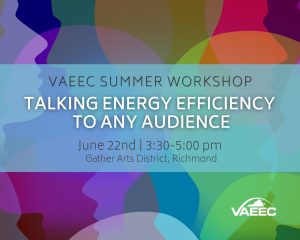 Last week, the VAEEC held our first-ever Summer Workshop, Talking Energy Efficiency to Any Audience. The idea originated through staff conversations about how do you explain energy efficiency to elementary students at a career day or to our parents when they are concerned about rising utility bills.
Last week, the VAEEC held our first-ever Summer Workshop, Talking Energy Efficiency to Any Audience. The idea originated through staff conversations about how do you explain energy efficiency to elementary students at a career day or to our parents when they are concerned about rising utility bills.
During the event, attendees heard from three experts on how to discuss energy efficiency with your neighbors, business owners, contractors, and kids. Facilitators included:
- Corey Argentino, EarthRight,
- Michael Flanagan, Quick AC Quote, and,
- Josh Woodruff, Franklin Energy.
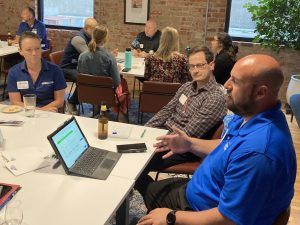 Afterward, we self-selected into small groups to work with those facilitators on our own pitch. Key takeaways included:
Afterward, we self-selected into small groups to work with those facilitators on our own pitch. Key takeaways included:
- Energy Efficiency is frequently confused with solar. Provide examples of efficiency measures (insulation, LED lighting, system controls, etc.) to distinguish the difference between the two, and explain the importance of efficiency before renewables (the cheapest kilowatt is the kilowatt saved);
- It is difficult to sell a free service to people- they tend to be skeptical about free programs or products; and
- Money talks. Sharing projected utility bill savings goes a long way in convincing someone to implement energy efficiency measures.
The event concluded with ample networking time for attendees to connect over food and beverages.
Thank you, Franklin Energy, for sponsoring this event.
We are hosting a second workshop, Selling the ‘Why’ of Energy Efficiency, on August 17th from 4:00-6:00 pm. Registration is open and free for VAEEC members. Not yet a VAEEC member? Join our network today, or pay $10 for workshop registration.
Virginia’s energy efficiency industry gathered together to learn and connect at the VAEEC’s annual Spring Forum on May 23rd. Nearly 100 energy efficiency professionals participated in the event, which included a keynote address, business meeting with Board of Directors elections, membership spotlight, plenary session, and networking time. Thank you to our sponsors, speakers, and attendees for making this event a great success!
Prior to the start of the event, around 20 attendees came together to tour the award-winning, LEED Gold-certified Fairfield Area Library. Opened in late 2019, the library is Henrico County’s 18th government or school building to earn LEED certification for sustainable design and construction and reduced environmental impact. Encompassing 45,000 SF, it features LED interior and exterior lighting, third-party verification of its mechanical and electrical systems, and long-term energy performance verification. Building materials include sustainably harvested wood, rapidly renewable cork, and low-emitting materials. The tour was led by Andrea Quilici and Chuck Wray from the project’s architect firm, Quinn Evans, and Carrie Webster, Henrico County‘s Energy Manager.
The Spring Forum then kicked off with an opening presentation from Executive Director, Chelsea Harnish, who provided an update about Virginia’s energy efficiency industry and the organization’s accomplishments from 2022 to today. This included the VAEEC’s 2023-2025 Strategic Plan objectives and our new Energizing Efficiency Campaign.
Next was a keynote address from Theresa Backhus, Director of the Building Innovation Hub (HUB) with the Institute for Market Transformation (IMT). The HUB supports high-performing buildings across D.C., Maryland, and Virginia by connecting decision-makers, localities, contractors, building owners, and others to resources that make buildings energy-efficient and resilient. Theresa shared an overview of the resources the HUB provides, as well as the building decarbonization opportunities available through federal funding. She also gave an overview of the DMV’s building code updates and building energy performance standards with an emphasis on what Virginia localities can do to address energy efficiency in a Dillion Rule state.
“It’s important not to forget that at the end of the day, buildings are for people; they must support the community they surround.” – Theresa Backhus, Building Innovation Hub (IMT)
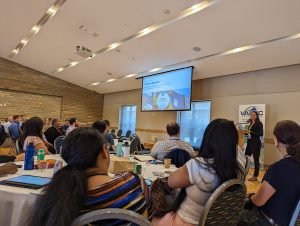 Approximately 1/3 of our greenhouse gas emissions are from the new and existing building stock. The HUB emphasizes the importance of transitioning from looking at buildings as the problem to looking at them as the opportunity. And above all, we cannot forget that buildings are for people, which is especially true when you consider that we spend roughly 90% of our lives in buildings. Therefore, they must support the community around them by focusing on energy efficiency, resiliency, and health and safety.
Approximately 1/3 of our greenhouse gas emissions are from the new and existing building stock. The HUB emphasizes the importance of transitioning from looking at buildings as the problem to looking at them as the opportunity. And above all, we cannot forget that buildings are for people, which is especially true when you consider that we spend roughly 90% of our lives in buildings. Therefore, they must support the community around them by focusing on energy efficiency, resiliency, and health and safety.
Next, John Morrill, led the business portion of the event, which started off with our 2023 Board of Directors election. VAEEC members re-elected two board members:
- Bryna Dunn, Moseley Architects (1st full term)
- Leigh Anne Ratliff, Trane Technologies (2nd term)
Members then voted to elect two new directors to the Board:
- McKenna Dunbar, Sierra Club Virginia Chapter
- Lesley Fore, Alliance to Save Energy
We are thrilled to add new voices to our leadership and to continue working with our two re-elected members. We would also like to recognize our outgoing Board members, Maggie Kelley Riggins, with the Southeast Energy Efficiency Alliance, and Joyce Bodoh, with Rappahannock Electric Cooperative, for their outstanding leadership to the organization.
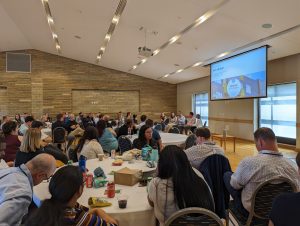 Attendees were next treated to a round robin of updates and successes from our members before moving into a networking break. After reconvening, the plenary session began. Meeting the Moment for Building Demand touched on the how the federal climate initiatives passed by the Biden administration will change the energy landscape for decades to come, before moving into how experts from across the field are planning to implement successful programs and projects using the funds. The discussion also included how we can make this round of funding more “durable” than that of the American Recovery & Reinvestment Act (ARRA) era to create systemic change and avoid the “one and done” projects.
Attendees were next treated to a round robin of updates and successes from our members before moving into a networking break. After reconvening, the plenary session began. Meeting the Moment for Building Demand touched on the how the federal climate initiatives passed by the Biden administration will change the energy landscape for decades to come, before moving into how experts from across the field are planning to implement successful programs and projects using the funds. The discussion also included how we can make this round of funding more “durable” than that of the American Recovery & Reinvestment Act (ARRA) era to create systemic change and avoid the “one and done” projects.
“We don’t have a shortage of money, but we need an easy button now to effectively deploy it. The Inflation Reduction Act is our window of opportunity to create a unified customer experience.” – Andrew Grigsby, Viridiant
Speakers included:
- Bettina Bergoo, Virginia Energy: Along with moderating the session, Bettina also spoke on Virginia Energy’s role and plans with the federal funding and the guidance currently available for HOMES/HEERHA.
- Andrew Grigsby, Viridiant: Andrew spoke on Viridiant’s success with the BENEFIT grant and how that can serve as a model for future programs. He also went into detail about the need for a unified customer experience that includes financing options available.
- Marco Rubin, Virginia Innovation Partnership Corporation: Marco discussed the startup environment since the passage of the inflation Reduction Act and Bipartisan Infrastructure Law, including looking the economic conditions at the micro-, macro-, and Marco-levels.
- Joyce Bodoh, Rappahannock Electric Cooperative: Given her role as the Director of Energy Solutions and Clean Energy at one of Virginia’s electric cooperatives, Joyce focused on how federal funding can be braided with the federal funding. She also spoke to the importance of customer data access and shared how REC’s summer savings pilot program provided $12k in bill credits to customers and saved REC $70K in wholesale power.
- Kim Strahm, Community Housing Partners: After having developed a successful workforce development program using funds from the 2009 ARRA, Kim shared best practices and lessons learned for developing and implementing programs using federal funding. Through CHP’s position on both the demand- and supply-side of high-performance buildings, Kim kept coming back to the need for a trained workforce.
As always, this event would not have been possible without our sponsors, speakers, and attendees. We would also like to thank the VAEEC Education & Events Committee for helping staff plan such a successful event.
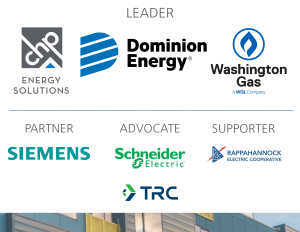 Be sure to save the date for our fall Energy Efficiency Forum– October 4th (virtual), October 5th (in-person, University of Richmond). We hope to see you there.
Be sure to save the date for our fall Energy Efficiency Forum– October 4th (virtual), October 5th (in-person, University of Richmond). We hope to see you there.
Additional event information, including speaker biographies and sponsor features, can be found in the event program. Event attendees received a PDF of the event’s presentation in the post-event email. Contact info@vaeec.org if you did not receive it. Events photos can be viewed in the photo gallery below.
The passage of the Virginia Clean Economy Act set lofty energy savings goals for the investor-owned utilities, in order to meet their greenhouse gas reduction targets by 2045. While there are multiple paths to achieving these goals, a recent report from ACEEE suggests that one key to success could be stronger building codes.
Over the next five years, the Bipartisan Infrastructure Law (BIL) and the Inflation Reduction Act (IRA) will allocate $1.2M towards code training and enforcement. In the ACEEE report, Virginia ranked sixth as one of the best positioned states to take advantage of this new funding to improve its energy codes across the residential, commercial, and industrial sectors.
According to ACEEE, Virginia needs to see the most emissions reduction by 2030 to meet its policy targets. While the VCEA savings targets are focused on cleaning up the grid, building codes can address both new construction and the existing building stock, which accounts for 40% of energy consumption nationwide. Based on their analysis, ACEEE found that Virginia needs to reduce emissions by more than 50% to meet the VCEA goals.
In Virginia, the commercial building code aligns with the IECC model code, but gaps in enforcement and code official training mean the state could save an additional 5-10% on energy costs by utilizing federal funds.
On the residential side, our current code is missing two critical provisions that would align with the 2021 IECC model code – improved R-value for wall insulation, and enhanced building tightness to reduce the number of air changes per hour. By adopting these amendments, ACEEE found that there could be a 17.8% reduction in energy costs. (Learn about the the Virginia building code update process on our website.)
The report also found that Virginia ranked in the median for homes built nationwide. Meaning, approximately 1700 new homes were built across the state in 2019, with the data projecting similar growth moving forward. New home construction is a great opportunity for increased energy efficiency.
Bringing the Uniform Statewide Building Code up to IECC standards and improving code enforcement, can help the state achieve up to 20% in residential energy cost-savings.
While the building code applies more directly to new construction, retrofits are a pathway to reducing emissions and costs in existing buildings as well. ACEEE also looked at carbon emissions from existing buildings and found that, in 2019, over 5 tons of CO2 per capita – equivalent to driving 12,000 miles in a standard gas SUV – were released from Virginia’s existing building stock. By 2050, as much as two-thirds of existing buildings statewide will have been constructed prior to 2020, therefore it is increasingly critical to address existing buildings, in addition to new construction. Utility residential energy efficiency programs will play a major role in reducing emissions from existing housing, thereby highlighting the need for a holistic approach to reducing carbon emissions from Virginia’s built environment.
The timing on the implementation of these federal dollars couldn’t be better. However, deployment of these funds must be part of a comprehensive strategy that takes into account Virginia policy. Facilitating these types of conversations with decision-makers is a role that the Virginia Energy Efficiency Council, and our members, can play. We look forward to that opportunity. Check our new federal funding page and our monthly e-newsletters for continued updates on this important work.
The VAEEC’s 2022 Energy Efficiency Forum brought together the Commonwealth’s energy efficiency community on October 31st and November 1st. A huge thank you to our sponsors, speakers, award winners, and attendees for making this event a great success!
In order to make the event more accessible to those near and far and to provide a diverse array of speakers from across the country, day one was fully virtual. It consisted of four breakout sessions and a networking session.
A Tale of Two Heat Pumps: Heat pump adoption is a priority for the Biden administration, and the technology has long been proven to be safer and more efficient than traditional boilers. However, barriers exist to widespread use. This session discussed the barriers and opportunities with experts from the NE and SE to address these regions’ needs and perspectives. Speakers included Maggie Kelley Riggins (Southeast Energy Efficiency Alliance), Dan Lis (Northeast Energy Efficiency Partnerships), Louis O’Berry (Rappahannock Electric Cooperative), and Dan York (American Council for an Energy-Efficient Economy, moderator).
Using Less to Get More: The Role of Energy Efficiency in Decarbonization: Decarbonization has become a buzzword lately with the passage of historic federal laws. During this panel, attendees learned from those implementing successful decarbonization programs with an eye on energy efficiency. Examples included both state- and utility-run programs, including what one of the Commonwealth’s gas utilities has in the works. Erich Evans (Columbia Gas), Caterina “Katy” Hatcher (U.S. Environmental Protection Agency), Shaun Hoyte (Con Edison), and Edward Yim (ACEEE) were the speakers, while Solome Girma (D.C. Sustainable Energy Utility) moderated.
Proof of Concept: Approaches to Energy Efficiency: This case study session was designed to provide the value of shared experience and knowledge from those who have successfully navigated new technologies and programs. Robert Hart (Lawrence Berkeley National Lab) covered the advancements in window construction. Betsy Farrell Garcia and Mackenzie Stagg (Front Porch Initiative) gave an overview of rural, low-income housing programs from experts in the field. Joyce Bodoh (Rappahannock Electric Cooperative) and Brett Hood (Community Housing Partners) moderated.
Efficiency First: Strategies to Improve Municipal Buildings: Local governments and public school systems often face a unique set of challenges when it comes to the comfort, cost, and health of their buildings. This session focused on inventive ways this sector is improving its buildings through efficient and equitable programs. Speakers included Joanne Bissetta (Massachusetts Department of Energy Resources), Ann Livingston (Southeast Sustainability Directors Network), Christopher Russell (Maryland Energy Administration), and Kristel Riddervold (City of Charlottesville, VA, moderator).
Attendees gathered in person for day two at the University of Richmond Jepson Alumni Center in Richmond. The day began with an opening presentation from Executive Director, Chelsea Harnish. Attendees were updated on the organization’s 2022 accomplishments and our 2023 priorities, as well as an overview of the Commonwealth’s energy efficiency industry.
Everyone was then treated to a keynote address from Jennifer Bumgarner, the Principal Deputy Assistant Secretary, Office of Congressional and Intergovernmental Affairs at the U.S. Department of Energy (DOE). Ms. Bumgarner provided a breakdown of the Bipartisan Infrastructure Law (BIL) and Inflation Reduction Act (IRA) funding, as well as how the DOE is preparing to use this funding for the expansion of programs for state and local benefits and workforce development. Highlights of the address included approximations of when applications for the different buckets of funding will open, tips on what to include in your proposals, and DOE resources to help you navigate all of the options.
After a break of networking and snacks, attendees came back together for the plenary session, Preparing for Impact: New Funding Opportunities to Accelerate Energy Efficiency. Between the Bipartisan Infrastructure Law and the Inflation Reduction Act, states and localities are receiving a historic investment in clean energy. But what does that mean for Virginia? Experts in state and local governments, industry, and policy provided a breakdown and predictions for what’s next for energy efficiency in the Commonwealth. Speakers included Sabine Rogers (AnnDyl Policy Group), Bettina Bergoo (Virginia Energy), Abby Campbell Singer (Siemens USA), John Morrill (Fairfax County Government), and Rebecca Hui (Virginia Energy Efficiency Council, moderator).
Next, we had the privilege of hosting our seventh annual Virginia Energy Efficiency Leadership Awards ceremony. One project and two programs were recognized for their incredible energy efficiency contributions to the Commonwealth. For information on each winning project, visit our 2022 Awards page.
Finally, the event concluded with an on-site networking reception. It is always a pleasure to connect with many of our members and others in the industry face-to-face, and this was no exception.
Thank you to our sponsors, speakers, award winners, and event attendees for making this one of our best events to date. Click here to view photos of the event. Additional event information, including speaker biographies and sponsor features, can be found in the event program.
Event attendees received recordings for each of the four breakout sessions in the post-event email. Presentation PDFs can be viewed at the links above.
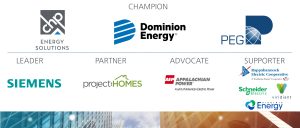
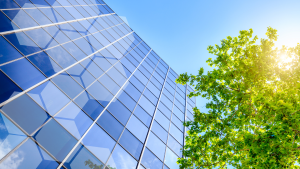 Virginia’s High-Performance Buildings Act (HB2001) was signed into law in 2021, with the goal to drive more efficient, resilient, and future-proof buildings. The law updated the building performance standards for state/public buildings by adding electric vehicle charging and infrastructure and utility metering requirements. It also created new building performance standards for local governments.
Virginia’s High-Performance Buildings Act (HB2001) was signed into law in 2021, with the goal to drive more efficient, resilient, and future-proof buildings. The law updated the building performance standards for state/public buildings by adding electric vehicle charging and infrastructure and utility metering requirements. It also created new building performance standards for local governments.
Since the act was introduced in the General Assembly, the VAEEC and key partners have been working with the bill patron and others to clarify the requirements and identify potential updates to the existing law. This included working with the Department of General Services (DGS) to update the Virginia Energy Conservation and Environmental Standards (VEES) for the first time since 2012.
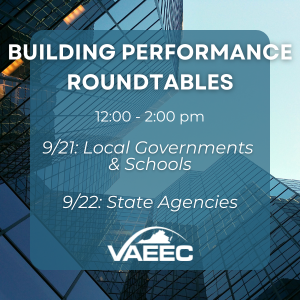 In September of this year, we held two building performance roundtable discussions with localities, state agencies, schools, architecture and design firms, engineering firms, and energy service companies. The goals were to educate stakeholders about the requirements and identify ways to update the law so that it better suits the needs of the intended audience.
In September of this year, we held two building performance roundtable discussions with localities, state agencies, schools, architecture and design firms, engineering firms, and energy service companies. The goals were to educate stakeholders about the requirements and identify ways to update the law so that it better suits the needs of the intended audience.
VAEEC Board members Elizabeth Beardsley (U.S. Green Building Council) and Bryna Dunn (Moseley Architects) started off the roundtables with an overview of the law and the pathways to compliance.
By July 1, 2021, state agency buildings were mandated to:
- Be designed, constructed, verified, and operated to comply with a high-performance building certification program,
- Comply with VEES,
- Have sufficient zero-emission vehicle infrastructure, and
- Include features that measure energy consumption and associated carbon emissions.
In the law, there is an option to exceed the above design and construction standards with prior written approval from the Director of DGS. The Director of DGS can also grant exemptions for specific projects if it is impractical to build or renovate to the standards. HB2001 also added a new reporting requirement for state agencies: an annual report is due to the Governor by January 1st detailing the energy efficiency and associated carbon emissions metrics for each applicable building built or renovated during the prior fiscal year.
Beginning July 1, 2021, buildings for localities with populations of 100,000 or more must:
- Be designed, constructed, verified, and operated to comply with one of three high-performance building certification programs (LEED certification, Green Globes Certification, or VEES verification),
- Have sufficient zero-emission vehicle charging and fueling infrastructure,
- Include features that measure the energy consumption and associated carbon emissions, and
- Incorporate appropriate resilience and distributed energy features.
Remaining localities will need to abide by these requirements beginning July 1, 2023.
Localities can seek an exemption if it is impractical to build or renovate to the standards. Local governments also have the option to adopt their own green design and construction program with standards that are more stringent than those required by law.
The above mandates apply to new buildings over 5,000 square feet and renovations where the cost of the renovation exceeds 50% of the value of the building. Smaller projects (those that are less than 20,000 gross square feet in size) have the option to achieve an ENERGY STAR certification with the implementation of mechanical, electrical, plumbing, and envelope commissioning instead.
The three compliance pathways are LEED certification, Green Globes Certification, or VEES verification. LEED v4 is the newest version of the LEED green building certification. A building must comply with a set of prerequisites, but then you can select a minimum number of criteria depending on what makes the most sense for your building. Similarly, Green Globes provides the option to pick and choose a minimum number of criteria, but this certification program does not have prerequisites. VEES follows the International Green Construction Code, so a building must comply with all of the stated requirements.
Guidance, resources, and support exist to help state agencies and local governments navigate and meet the law’s requirements. Starting October 1st, the Southeast Energy Efficiency Alliance (SEEA) will be providing technical assistance with policy creation and stakeholder engagement. They will also be providing technical assistance and training on the Building Energy Analysis Manager (BEAM) tool, which helps states and communities achieve building energy policy goals.
Additionally, Moseley Architects created a Requirements Summary for HB2001, which includes an option comparison. The U.S. Green Building Council (USGBC) curated two resources specific to green building in Virginia, Getting Started with High Performance Green Building: A Guide for Virginia Localities and VA HB2001: Summary & FAQ for Local Governments. USGBC also created Inflation Reduction Act: Buildings Provisions, which state agencies and localities will find helpful as they navigate the opportunities in the Inflation Reduction Act. These resources can be viewed at the respective links above, as well as in the VAEEC government clearinghouse. The clearinghouse also includes additional green building resources for our local government, academic, and state agency members.
Facilitated discussions took up the remainder of the event. Attendees were encouraged to ask questions and provide feedback, including:
- What part(s) of the legislation is consistent with objectives already set by your locality/agency?
- What part(s) of the legislation is helping move forward objectives that your locality/agency supports but doesn’t already have policies around?
- What clarifications or additions would you offer to update the current language?
- How can VAEEC and our partners support you in meeting your sustainability goals and the requirements of this legislation?
The presentation PDFs are available to download (local governments and schools, state agencies), and recordings of both roundtables can be viewed on the VAEEC YouTube channel. To learn more about building performance, register to attend our Energy Efficiency Forum on October 31st (virtual) and November 1st (in-person, Richmond). Additional questions can be addressed to Jessica Greene (jessica@vaeec.org).
A new program launched by Dominion Energy provides a kit of smart home technology with an instant rebate to eligible customers in Virginia.
New Smart Home technology helps customers save energy and be more aware of the electric use in their home. To help customers adopt this new technology, Dominion Energy is offering eligible customers in Virginia as well as North Carolina rebates on smart home products.
The Smart Home program gives customers the opportunity to purchase a smart home kit on the program website, smarthome.domsavings.com, with an instant $25 rebate. The base kit includes a Kasa Smart Plug with Energy Monitoring, two Kasa Smart Wi-Fi Plug Minis, the Philips Hue Smart White Ambiance LED Starter Kit and a Philips Hue Motion Sensor.
Customers can enhance their smart home setup by adding an ecobee Smart Thermostat ($50 rebate) or Sense Home Energy Monitor ($70 rebate) to their kit purchase, and each is available with an additional instant rebate. The Sense Energy Monitor must be installed in your electric panel by a licensed electrician.
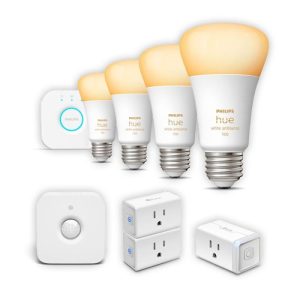 As such, electricians as well as solar installers with on-staff licensed electricians can become participating contractors with Dominion’s Smart Home Program. Participating contractors benefit from the program in many ways including getting listed on Dominion’s website and access to free training. To learn more about becoming a participating contractor including the eligibility requirements, visit www.dom-vendor.com.
As such, electricians as well as solar installers with on-staff licensed electricians can become participating contractors with Dominion’s Smart Home Program. Participating contractors benefit from the program in many ways including getting listed on Dominion’s website and access to free training. To learn more about becoming a participating contractor including the eligibility requirements, visit www.dom-vendor.com.
With integration between smart home devices and a smartphone and / or voice assistant, customers will have increased control over their home’s energy use, even remotely. Customers will have the ability to put your devices on a schedule, allow devices to perform energy-efficient actions on their own, and connect to other smart technologies.
Learn more about how the program helps customers leverage integrated energy-efficient smart home products to reduce and manage a home’s energy consumption. Visit smarthome.domsavings.com for more information. Terms and Conditions and eligibility requirements apply. Subject to change at any time.
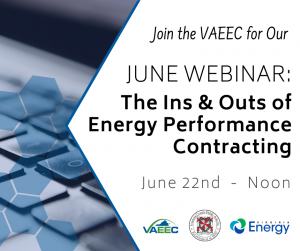 The Virginia Energy Efficiency Council (VAEEC) recently hosted a webinar, The Ins and Outs of Energy Performance Contracting, featuring Virginia Energy and Loudoun County Public Schools. The webinar provided an overview of how Energy Performance Contracting (EPC) works and the recent improvements to Virginia’s program. Loudoun County Public Schools recounted their experiences using EPC to enhance their buildings and meet their capital improvement and sustainability goals. Speakers included Nam Nguyen (Virginia Energy), Nick Polier (Virginia Energy), Michael Barancewicz (Loudoun County Public Schools), and Susan Gerson (Loudoun County Public Schools).
The Virginia Energy Efficiency Council (VAEEC) recently hosted a webinar, The Ins and Outs of Energy Performance Contracting, featuring Virginia Energy and Loudoun County Public Schools. The webinar provided an overview of how Energy Performance Contracting (EPC) works and the recent improvements to Virginia’s program. Loudoun County Public Schools recounted their experiences using EPC to enhance their buildings and meet their capital improvement and sustainability goals. Speakers included Nam Nguyen (Virginia Energy), Nick Polier (Virginia Energy), Michael Barancewicz (Loudoun County Public Schools), and Susan Gerson (Loudoun County Public Schools).
Energy Performance Contracting (EPC) is a budget-neutral option for state agencies, localities, public schools, and other public bodies to finance building upgrades while reducing energy use. Through EPC, public entities are able to improve their building performance, address maintenance needs, and reduce their energy consumption – all while achieving a guaranteed level of energy savings. Virginia’s program was established in 2002. To date, there have been more than 280 projects and over $1B in project investment.
EPC projects and customers include public K-12 schools and universities, localities, state agencies, regional jails, and correctional facilities. Virginia Energy provides support throughout the entire EPC process – from the design phase all the way through measurement and verification. This support comes at no cost to the customer and includes all necessary documents and templates to reduce time requirements. Customers are able to select an energy service company (ESCO) to perform the work from a prequalified vendor pool, which expedites the procurement process. The avoided costs from building upgrades pay for the cost of the project and there is a guaranteed energy saving.
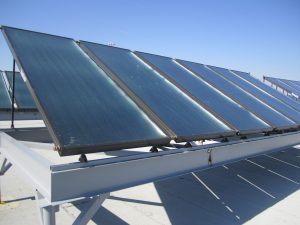 During this year’s General Assembly Session, the VAEEC worked with Virginia Energy and our ESCO members to update the Commonwealth’s existing EPC legislation. Once these laws take effect, EPC will be able to finance all roof repairs and full replacements, allowing public buildings to use EPC to become solar-ready. This will provide public bodies with the opportunity to fully finance solar under an EPC (see our fact sheet for more information).
During this year’s General Assembly Session, the VAEEC worked with Virginia Energy and our ESCO members to update the Commonwealth’s existing EPC legislation. Once these laws take effect, EPC will be able to finance all roof repairs and full replacements, allowing public buildings to use EPC to become solar-ready. This will provide public bodies with the opportunity to fully finance solar under an EPC (see our fact sheet for more information).
EPC has been particularly beneficial to some localities, such as Loudoun County, which is the fastest-growing county in Virginia with the third-largest school division. With sustainability in mind and the challenge of aging infrastructure, Loudoun County Public Schools reached a point where they could no longer reduce their energy usage without making significant investments. This led them to partner with Virginia Energy to pursue EPC. Through this first pilot project, LCPS saw a 75% kWh reduction, which was even better than the guaranteed level of energy savings. This positive experience led LCPS to continue to use EPC to not only address deferred maintenance and equipment upgrades, but to meet their capital improvement and sustainability goals.
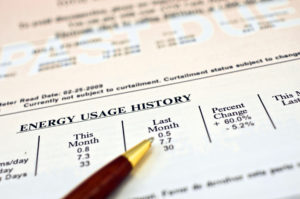 EPC provides the school system with the fiscal advantage of financing energy efficiency retrofits from realized future energy savings. Additional benefits include expertise in design, planning, implementation, and communication; resources that guarantee long-term success; the inclusion of non-energy conservation measures projects (such as security systems); and a trusted partnership between LCPS and their selected ESCO, CMTA. Not only did CMTA understand the nuances of working in an educational environment, but they offered staff training for LCPS employees and have participated in educational opportunities for students.
EPC provides the school system with the fiscal advantage of financing energy efficiency retrofits from realized future energy savings. Additional benefits include expertise in design, planning, implementation, and communication; resources that guarantee long-term success; the inclusion of non-energy conservation measures projects (such as security systems); and a trusted partnership between LCPS and their selected ESCO, CMTA. Not only did CMTA understand the nuances of working in an educational environment, but they offered staff training for LCPS employees and have participated in educational opportunities for students.
If you are interested in learning more about energy performance contracting, check out the resources below.
VAEEC EPC fact sheet (6/2022)
VAEEC EPC webpage
Virginia Energy EPC webpage
Webinar Presentation PDF (6/2022)
Webinar Recording link (6/2022)

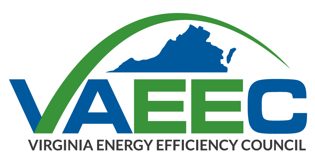
 Keynote Address:
Keynote Address:  The Energy Efficiency Workforce Initiative: A Holistic Path to Workforce Development:
The Energy Efficiency Workforce Initiative: A Holistic Path to Workforce Development: Last week, the VAEEC held our first-ever Summer Workshop, Talking Energy Efficiency to Any Audience. The idea originated through staff conversations about how do you explain energy efficiency to elementary students at a career day or to our parents when they are concerned about rising utility bills.
Last week, the VAEEC held our first-ever Summer Workshop, Talking Energy Efficiency to Any Audience. The idea originated through staff conversations about how do you explain energy efficiency to elementary students at a career day or to our parents when they are concerned about rising utility bills. Afterward, we self-selected into small groups to work with those facilitators on our own pitch. Key takeaways included:
Afterward, we self-selected into small groups to work with those facilitators on our own pitch. Key takeaways included: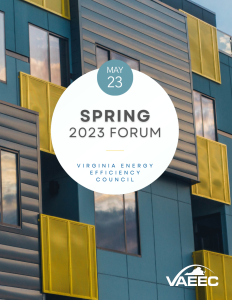
 Approximately 1/3 of our greenhouse gas emissions are from the new and existing building stock. The HUB emphasizes the importance of transitioning from looking at buildings as the problem to looking at them as the opportunity. And above all, we cannot forget that buildings are for people, which is especially true when you consider that we spend roughly 90% of our lives in buildings. Therefore, they must support the community around them by focusing on energy efficiency, resiliency, and health and safety.
Approximately 1/3 of our greenhouse gas emissions are from the new and existing building stock. The HUB emphasizes the importance of transitioning from looking at buildings as the problem to looking at them as the opportunity. And above all, we cannot forget that buildings are for people, which is especially true when you consider that we spend roughly 90% of our lives in buildings. Therefore, they must support the community around them by focusing on energy efficiency, resiliency, and health and safety. Attendees were next treated to a round robin of updates and successes from our members before moving into a networking break. After reconvening, the plenary session began. Meeting the Moment for Building Demand touched on the how the federal climate initiatives passed by the Biden administration will change the energy landscape for decades to come, before moving into how experts from across the field are planning to implement successful programs and projects using the funds. The discussion also included how we can make this round of funding more “durable” than that of the American Recovery & Reinvestment Act (ARRA) era to create systemic change and avoid the “one and done” projects.
Attendees were next treated to a round robin of updates and successes from our members before moving into a networking break. After reconvening, the plenary session began. Meeting the Moment for Building Demand touched on the how the federal climate initiatives passed by the Biden administration will change the energy landscape for decades to come, before moving into how experts from across the field are planning to implement successful programs and projects using the funds. The discussion also included how we can make this round of funding more “durable” than that of the American Recovery & Reinvestment Act (ARRA) era to create systemic change and avoid the “one and done” projects. Be sure to save the date for our fall
Be sure to save the date for our fall 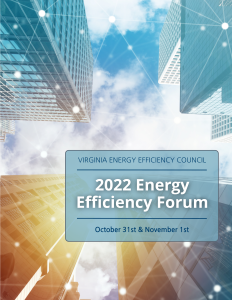

 Virginia’s
Virginia’s  In September of this year, we held two building performance roundtable discussions with localities, state agencies, schools, architecture and design firms, engineering firms, and energy service companies. The goals were to educate stakeholders about the requirements and identify ways to update the law so that it better suits the needs of the intended audience.
In September of this year, we held two building performance roundtable discussions with localities, state agencies, schools, architecture and design firms, engineering firms, and energy service companies. The goals were to educate stakeholders about the requirements and identify ways to update the law so that it better suits the needs of the intended audience. 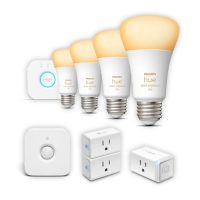

 The Virginia Energy Efficiency Council (VAEEC) recently hosted a webinar,
The Virginia Energy Efficiency Council (VAEEC) recently hosted a webinar,  During this year’s General Assembly Session, the VAEEC worked with Virginia Energy and our ESCO members to update the Commonwealth’s existing EPC legislation. Once these laws take effect, EPC will be able to finance all roof repairs and full replacements, allowing public buildings to use EPC to become solar-ready. This will provide public bodies with the opportunity to fully finance solar under an EPC (see our
During this year’s General Assembly Session, the VAEEC worked with Virginia Energy and our ESCO members to update the Commonwealth’s existing EPC legislation. Once these laws take effect, EPC will be able to finance all roof repairs and full replacements, allowing public buildings to use EPC to become solar-ready. This will provide public bodies with the opportunity to fully finance solar under an EPC (see our  EPC provides the school system with the fiscal advantage of financing energy efficiency retrofits from realized future energy savings. Additional benefits include expertise in design, planning, implementation, and communication; resources that guarantee long-term success; the inclusion of non-energy conservation measures projects (such as security systems); and a trusted partnership between LCPS and their selected ESCO, CMTA. Not only did CMTA understand the nuances of working in an educational environment, but they offered staff training for LCPS employees and have participated in educational opportunities for students.
EPC provides the school system with the fiscal advantage of financing energy efficiency retrofits from realized future energy savings. Additional benefits include expertise in design, planning, implementation, and communication; resources that guarantee long-term success; the inclusion of non-energy conservation measures projects (such as security systems); and a trusted partnership between LCPS and their selected ESCO, CMTA. Not only did CMTA understand the nuances of working in an educational environment, but they offered staff training for LCPS employees and have participated in educational opportunities for students.